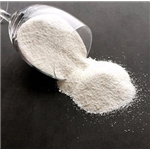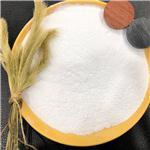The brief introduction of Levamisole
Jun 26,2024
Introduction
Levamisole is an antihelminthic agent with immunomodulatory properties. Its use in childhood nephrotic syndrome was first described by Tanphaichitr and co-workers in 1980, and many later studies have described its benefits as well.

Levamisole is an anthelmintic agent effective against A. lumbricoides and Ancylostoma duodenale. Like pyrantel, levamisole appears to act on nematode muscle, interfering with the function of a nicotinic acetylcholine receptor. This depolarizes the muscle membrane and paralyzes the worm. Although its exact mechanism of action is unclear, levamisole may act by augmenting the type 1 response and reciprocally by down-regulating the type 2 response by selective induction of gene transcription of critical cytokines, such as interleukin-18. Levamisole may reduce the frequency of relapses and reduce steroid doses in steroid-dependent patients. Resistance appears due to ion channel desensitization in the nicotinic acetylcholine receptor. It is well absorbed orally and extensively metabolized in the liver. Levamisole is excreted in the urine mainly as metabolites; only a small amount (<6%) is excreted in the feces. The pharmacokinetics of levamisole have not been evaluated in renal or hepatic disease, in children, or the elderly. Animal studies with levamisole have not shown any evidence of teratogenicity. Nevertheless, treatment of pregnant women with levamisole should be deferred until after delivery. When used to treat helminth infections, levamisole is well tolerated, except for mild GI distress[1].
Uses
It is used as an immunomodulating drug in adjuvant therapy for colon cancer, usually combined with 5-fluorouracil, and in other conditions, including nephrotic syndrome and some infections, such as pediculosis and recurrent aphthous ulceration.
Use in infective conditions
Treatment of ascariasis with a single oral dose of levamisole 2.5 mg/kg is effective, with evidence of toxicity in under 1% of patients. Levamisole has been used experimentally in leprosy, particularly in combination with dapsone. This combination was used in a documented series of Indian patients, some currently lepromatous and others in the course of a leprosy reaction. When using doses sufficient to provide as good an effect as that obtained with clofazimine + dapsone in a comparison group, adverse effects were limited to gastrointestinal intolerance (which was usually mild), affecting only five of the 30 patients treated; an incidental case developed pyrexia.
Brucellosis
Adding levamisole to conventional antibiotic therapy may improve anergy against Brucella, bacteria that can survive in phagocytic cells. This hypothesis has been investigated in patients with chronic brucellosis in Turkey. A 6-week course of levamisole, in addition to conventional antibiotic therapy in chronic brucellosis, was not superior to conventional antibiotic treatment alone with respect to lymphocyte subgroup ratios and phagocytic function. Adverse reactions were not reported[2].
Use in non-infective conditions
Levamisole has immunostimulatory activity by modulating the cell-mediated immune response and restoring T-cell functions. It has, therefore, been used extensively and for extended periods of time in various rheumatic and other chronic diseases, in aphthous ulceration, nephrotic syndrome, warts, and malignancies, such as cancers of the head and neck and, in combination with 5-fluorouracil, colorectal cancer. Under these conditions, its adverse effects are more frequent and rather different because of the differing dosage scheme and presumably also the greater sensitivity of the individual, quite apart from the fact that it is often used in combination, for example, with 5-fluorouracil; some 5% of patients fail to complete the course of treatment because of adverse reactions.
Side effects
Adverse effects of levamisole are uncommon but include leucopenia, gastrointestinal effects, and occasionally vasculitis.
References
[1] Gupta, Mrinal. “Levamisole: A multi-faceted drug in dermatology.” Indian Journal of Dermatology Venereology Leprology 82 1 (2016): 230–236.
[2] “Levamisole”Meyler's Side Effects of Drugs (Sixteenth Edition) (2016): 522-531.
- Related articles
- Related Qustion
- Synthesis and Toxicology of Levamisole Oct 11, 2022
Levamisole is commonly used for deworming of various animals and is effective against both adults and larvae.
Guanidine hydrochloride shows promise for treating triple-negative breast cancer by targeting KCNG1 gene, but requires careful handling due to health hazards.....
Jun 26,2024APIThe industrial process of domestic Resorcinol comprises the benzene sulfonated alkali fusion method, group method of substitution, arylation method, hydroxylating phenol, and m-Diisopropylbenzene oxidation style.....
Jun 26,2024Organic reagentsLevamisole
14769-73-4You may like
- Levamisole
-

- $10.00 / 1kg
- 2024-07-17
- CAS:14769-73-4
- Min. Order: 1kg
- Purity: 98%
- Supply Ability: 1200tons
- Levamisole
-

- $13.00 / 1kg
- 2024-07-17
- CAS:14769-73-4
- Min. Order: 1kg
- Purity: 99%
- Supply Ability: 300tons
- levamisole
-

- $10.00 / 1ASSAYS
- 2024-07-17
- CAS:14769-73-4
- Min. Order: 1ASSAYS
- Purity: 99%
- Supply Ability: 10 ton




